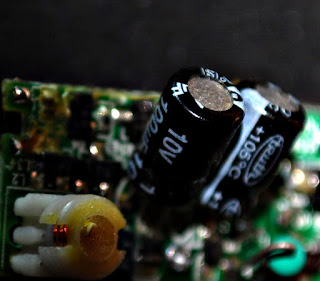The equipment I usually use on my shoots is a low end DSLR, Nikon D60, the standard 18-55 kit lens which came with the camera, a sturdy tripod, a set of ND filters, a remote and one flash unit also a good photo editing program.
Very basic and also very light to carry for when I can't find someone to act as my assistant for the day, with this equipment I can get the majority of the shots I want and I will explain how I achieved some of my favorite photographs taken over the last few years.
The shot above was taken today using the automatic settings and enhanced in a photo editing program, this is something of a controversy between photographers, some see the use of an editing program as "cheating" where as others such as myself see it as doing exactly what was achieved in the dark room in the days of processing 35mm (and other format) film.
There are the exceptions of course, there are manipulation processes which couldn't be achieved in the dark room that you can do using one of these programs, such as creating more depth of field to the photograph by using a out of focus tool, brightening and deepening the picture, sharpness and contrast enhancements.
You can also clone and layer photographs in these programs creating copies of objects or HDR style pictures.
Utilizing the cameras preset settings you can often achieve great results, the shot above is unedited and was taken using the Macro setting (depicted by a flower on your dial) this effectively enables you to take clear close up shots of objects, plants or insects showing texture and detail not usually found in standard photographs.
It is possible to get even closer shots using a lens with a larger focal length and/or macro extension tubes
( I have ordered some macro tubes which I am waiting on delivery) but if you do not have these the standard lens gets in quite close and can give some very nice results, and you can always crop in closer like I did with the shot below.
Long exposures in daylight is something I haven't quite achieved properly yet, but I have managed to get a few shots I quite like myself using the shutter priority mode again and 3 ND filters (neutral density filters) ND2, ND4 and ND8 at the same time, I set the ISO to 100 and the white balance to daylight, using a tripod and remote I took the shot at 10 second exposure ( I also forgot to clean my filters).
Below is a selection of my favorites taken with my usual equipment.








.jpg)






















